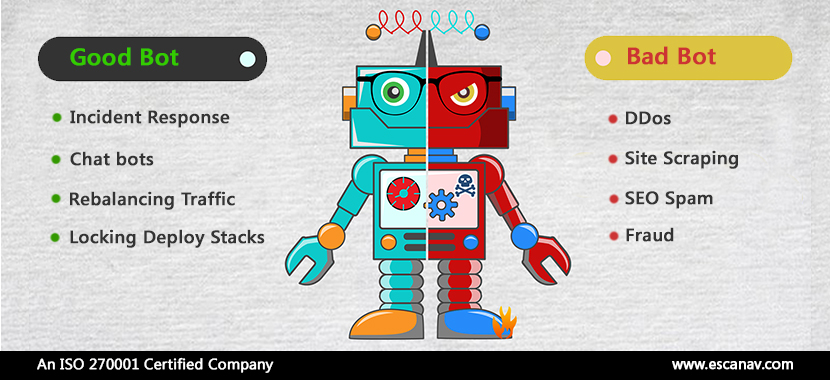In the last article, we stressed the importance of having an Incident Response Plan in place, while over years we have also elaborated on how threat actors have been using bots as a mode of attack against their victim. In this article, we wanted to enlighten our readers on how bots can be used for the good and can be used to mount a strong offense.
An autonomous software that interacts with a user or a computer system, is called a bot. Intelligent bots are usually coded to understand natural languages and can extract information from voice conversations and texts. They can identify and understand the user’s intent and can help them with specific tasks.
A bot attack is carried out when an attacker connects several devices that run one or more bots. These networks of bots follow the attacker’s instructions like the mice follow the piped piper, launching the desired attack to gain access to the network. These bots can be bought or rented and can also be modified by cybercriminals to carry out a malicious attack while making maximum impact.
Giving cybercriminals a taste of their own medicine.
A response bot is an AI-driven program that can be integrated into the response plan by security teams to improve their overall response time. A response bot observes and studies the actions of tier 2 and tier 3 analysts in an event of security threat and suggests recommendations. The response bot understands and learns from the details of the security incident that elicited the reactions to the analysts and recommends actions to the Tier 1 analysts.
Another method of using bots is by using them as chatbots. During the course of an attack, organizations can use the chatbots to assist the incident response team with communication. The chatbot binds the security incident to a chat room where all the discussions can be held. This helps with the centralization of the communications between the stakeholders while enabling quick decision making.
Some important actions can be performed right from the chat room itself, while those actions that have to be carried out outside or physically, are reported by the chatbot in the room for everyone to see it.
Other methods of using bots are to help to rebalance the traffic and to lock deploy stacks. Once the security incident, along with its effects are mitigated, the bot generates an incident reports which provides the incident response team with all the necessary information needed to improve their mitigation on prevention strategy.
With every advancing day, malicious bots are becoming more and more prevalent; however, security teams can turn the tables by enlisting the help of the good bots and use them against their malicious counterparts. While chatbots streamline incident response, bots take it a step further and even suggest recommendations to analysts on the course of actions that can be taken.
Good bots equal the playing field and ensure the incident response teams have a similar weapon in their arsenal as the attackers do.
Read the previous Article: Six crucial stages of Incident Response | A critical care for businesses







